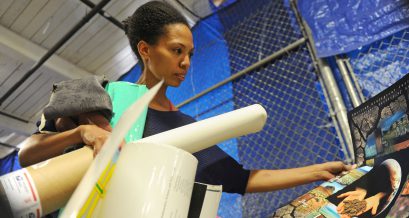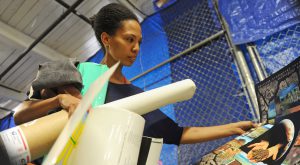We each have roles to play in the work ahead, work that will not end until we all understand and own our country’s full history of genocide, slavery and the exploitation of oppressed people—a history that often is hidden behind a false narrative of liberty and justice.
-
Affirming the Case for Student Voice
Wednesday, July 22, 2015There’s a whole body of research around restorative practices. The premise is that people are happier, more productive, and more likely to make positive changes when those in positions of authority do things with them, rather than to them or for them. In my ninth year now as a City principal, I have learned that when teachers and administrators give students voice—allowing them to speak up and for themselves—a culture develops that is conducive to learning.
-
A systematic and compassionate response to addiction
Thursday, July 16, 2015During the Uprising in Baltimore, police said more than 27 pharmacies and two methadone clinics were looted for pain medications and other prescription drugs. City officials estimate that, as a result of looting, there are now more than 175,000 doses of prescription pain medications available for black market purchase.
-
“The land of peace:” Calming down, speaking up
Tuesday, July 14, 2015If your only image of yoga involves White women in Lululemon garb, then you don’t know the Baltimore-based non-profit Holistic Life Foundation (HLF). Most often, you’ll find HLF founders Ali Smith, Atman Smith, and Andres Gonzalez teaching yoga to African-American youth in a public school gym. Most of these students are exposed to significant trauma—fallout from growing up in poverty-stricken urban neighborhoods.
-
Dismantling the workings of white supremacy
Thursday, July 09, 2015The poisonous notion of white supremacy is the root from which many of our experiences of American culture grows. It is what successive generations of black Americans have risked their lives to eradicate. It is the refuge from fair competition that has unjustly privileged white Americans for two and a half centuries.
-
A Case for Student Voice
Wednesday, July 01, 2015When Baltimore City erupted on the afternoon of Freddie Gray’s funeral, many adults froze in front of their television screens. The imagery of high school students hurling bricks and bottles at police in riot gear was, to many, stunning, shocking, astonishing. I was not astonished. Instead, I was saddened, because I was watching evidence of something I’d long known: We’d failed our students.
-
Guilt Before Innocence—This is Baltimore’s Bail System
Tuesday, June 23, 2015While civil unrest may have eased in Baltimore City, many of the individuals swept up in the police crackdown are still in jail—going on two months later—as they await final judgment of their criminal charges.
-
Justice’s False Choice
Friday, June 19, 2015In the wake of the rise in homicides in Baltimore, certain members of Baltimore’s police department are promoting a deceptive and dangerous narrative, translating the public’s demands for more humane policing as a request for impotent policing.
-
After the Uprising: Uplift Baltimore’s Youth
Wednesday, June 10, 2015The events that followed the death of Freddie Gray revealed several Baltimore fault lines, including a disconnect between younger generations who are awakening to the structural racism and inequality that limits their opportunity and established institutions that purport to make things better.
-
Why Baltimore Won’t Get Justice from Police
Thursday, June 04, 2015In order to think about solutions to the system, we need a deeper understanding of the problems. Police are trained to address violent crime, despite the fact that the majority of the calls for service that they receive are nonviolent in nature.



